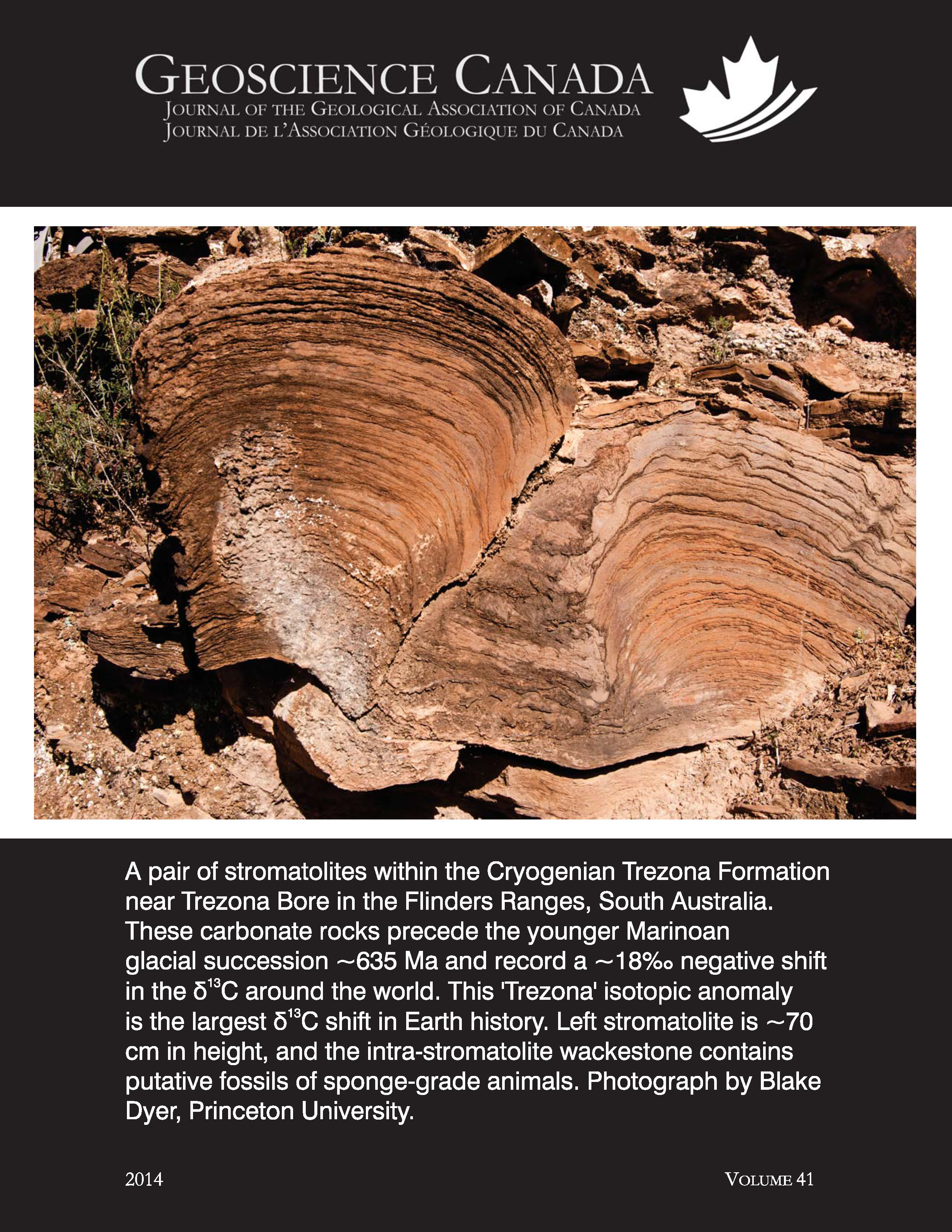Taconic Metamorphism Preserved in the Baie Verte Peninsula, Newfoundland Appalachians: Geochronological Evidence for Ophiolite Obduction and Subduction and Exhumation of the Leading Edge of the Laurentian (Humber) Margin During Closure of the Taconic Seaway
Published 2014-12-03
How to Cite
Abstract
The Baie Verte Peninsula, western Newfoundland Appalachians, preserves evidence for Early to Mid Ordovician closure of the Taconic seaway, which led to obduction of the Baie Verte oceanic tract (BVOT) ophiolites onto the Laurentian (Humber) margin and Taconic orogenesis. The scarcity of Taconic radiometric ages (and predominance of Silurian (Salinic) data) from the Humber margin rocks (down-going plate) has been problematic, calling into question the intensity and existence of Taconic collisional orogenesis. 40Ar/39Ar and in situ U–Pb geochronology was undertaken on metamorphosed units from the Laurentian basement (Mesoproterozoic East Pond Metamorphic Suite), from the ca. 560 Ma Birchy Complex forming the leading edge of the Humber margin, and from the ca. 490 Ma ophiolitic rocks of the BVOT (Advocate Complex) in order to address this question. Our results confirm evidence of Taconic metamorphism along the Humber margin and at the base of the ophiolites. Ages obtained from the structural base of the Advocate Complex (481–465 Ma) are interpreted to reflect the timing of accretion and internal thickening of the ophiolite, whereas data from the underlying Birchy Complex (467–461 Ma) record the underthrusting and exhumation of the leading edge of the Humber margin along a subduction channel, penecontemporaneously with final obduction of the BVOT. A concordant ca. 465 Ma zircon age and REE data obtained from retrogressed eclogite of the East Pond Metamorphic Suite suggest that the parautochthonous Humber margin was locally subducted to eclogite-facies conditions during the Taconic collision and partly exhumed to amphibolite-facies conditions prior to a strong Silurian (Salinic) tectonometamorphic overprint.
SOMMAIRE
La péninsule de Baie Verte dans les Appalaches de l’ouest de Terre-Neuve a conservé des indices de la fermeture du bras de mer taconique, qui a mené à l’obduction des ophiolites de la bande océanique de Baie Verte (BOBV) sur la marge laurentienne (Humber) et à l’orogénèse taconique. La rareté des âges radiométriques taconiques (et la prédominance des données siluriennes (saliniques)) provenant des roches de la marge de Humber (i.e. la plaque subductée) a été problématique, mettant en question l’intensité et l’existence de la collision orogénique taconique. De la géochronologie 40Ar/39Ar et U–Pb in situ a été réalisée sur des unités métamorphisés provenant du socle laurentien (la Suite Métamorphique d’East Pond d’âge Mésoprotérozoïque), du Complexe de Birchy daté à ca. 560 Ma formant la partie frontale de la marge de Humber, and des roches ophiolitiques de la BOBV (Complexe d’Advocate) datée à ca. 490 Ma afin de confronter ce questionnement. Nos résultats confirment les indices de métamorphisme taconique le long de la marge de Humber et à la base des ophiolites. Les âges obtenus à la base structurale du Complexe d’Advocate (481–465 Ma) sont interprétés comme reflétant la période d’accrétion et d’épaississement interne de l’ophiolite, tandis que les données du Complexe de Birchy sous-jacent (467–461 Ma) enregistrent le sous-charriage et l’exhumation de la partie frontale de la marge de Humber au sein d’un chenal de subduction, de façon pénécontemporaine à l’obduction finale de la BOBV. Un âge concordant de ca. 465 Ma d’un zircon et les données de terres rares provenant d’une éclogite rétromorphosée de la suite métamorphique d’East Pond suggèrent que la marge de Humber parautochtone a été localement subductée à des conditions du faciès éclogitique durant la collision taconique et partiellement exhumée à des conditions du faciès des amphibolites précédant la forte surimposition tectonométamorphique silurienne (salinique).
